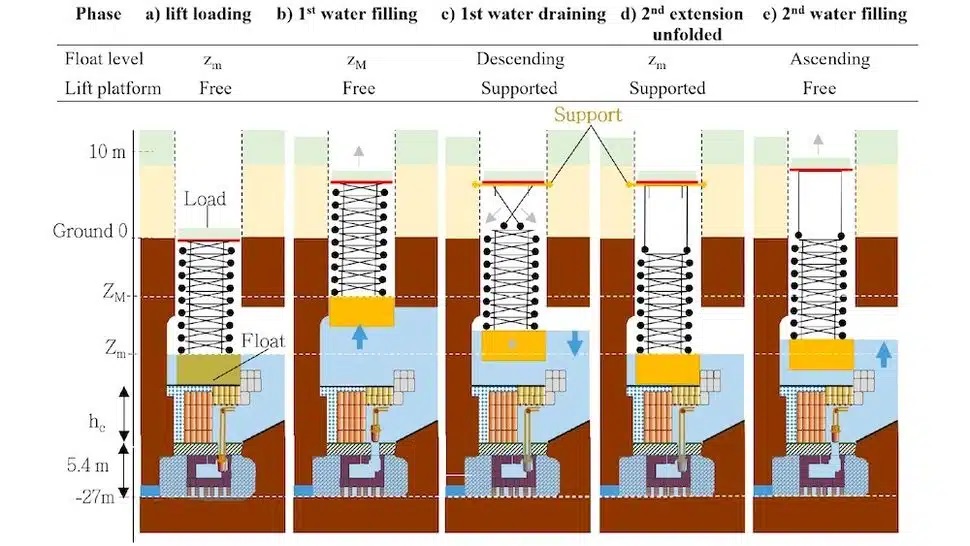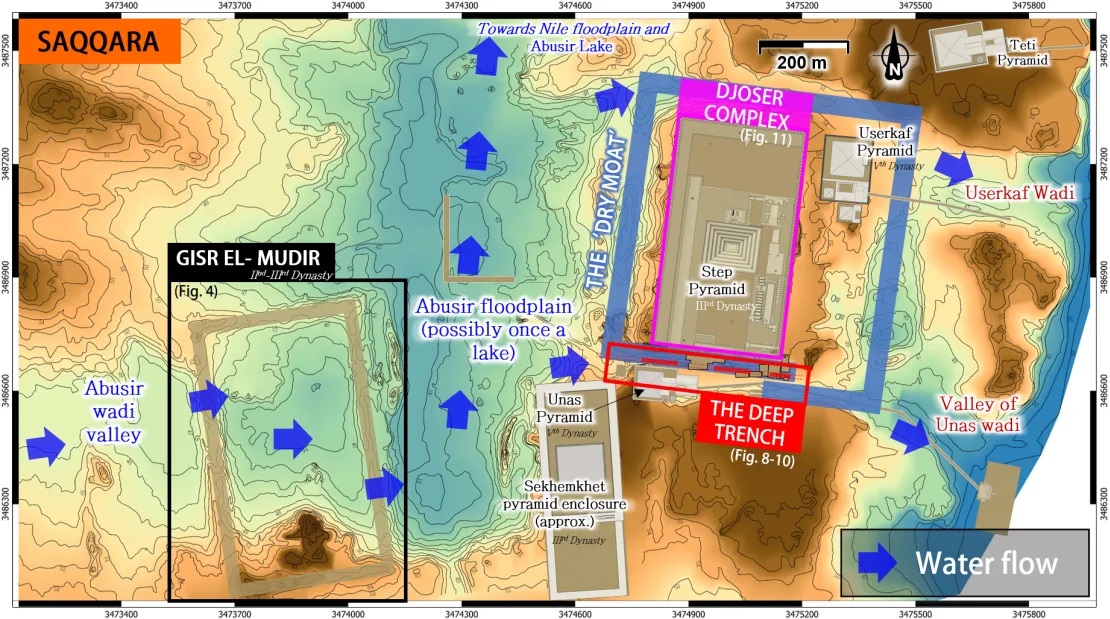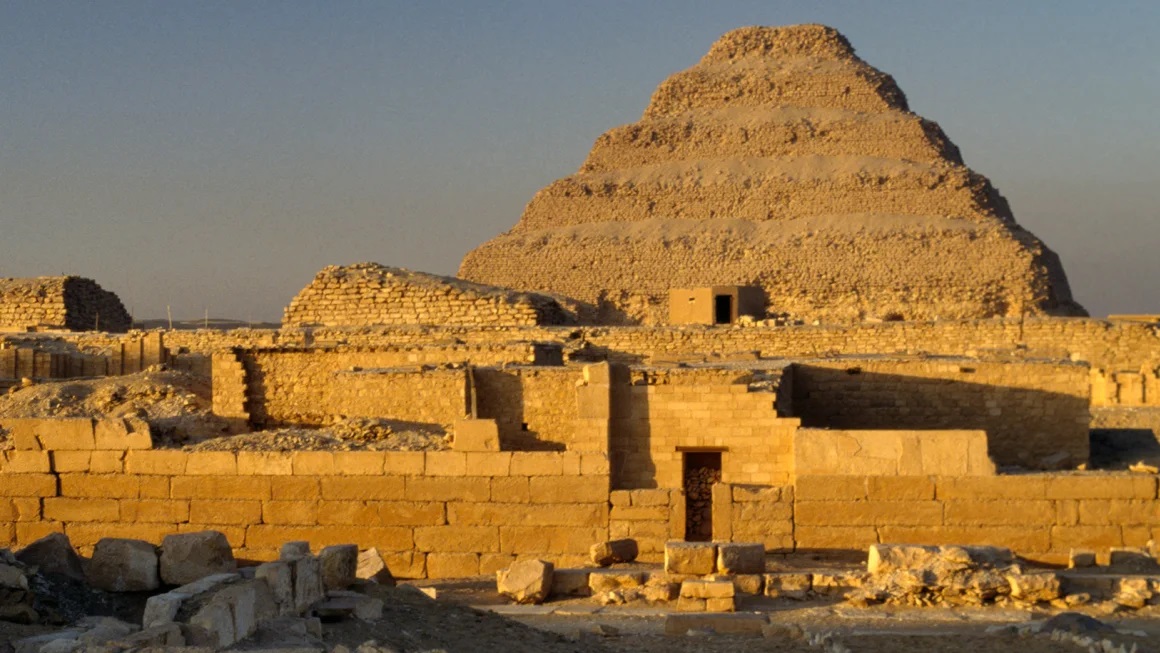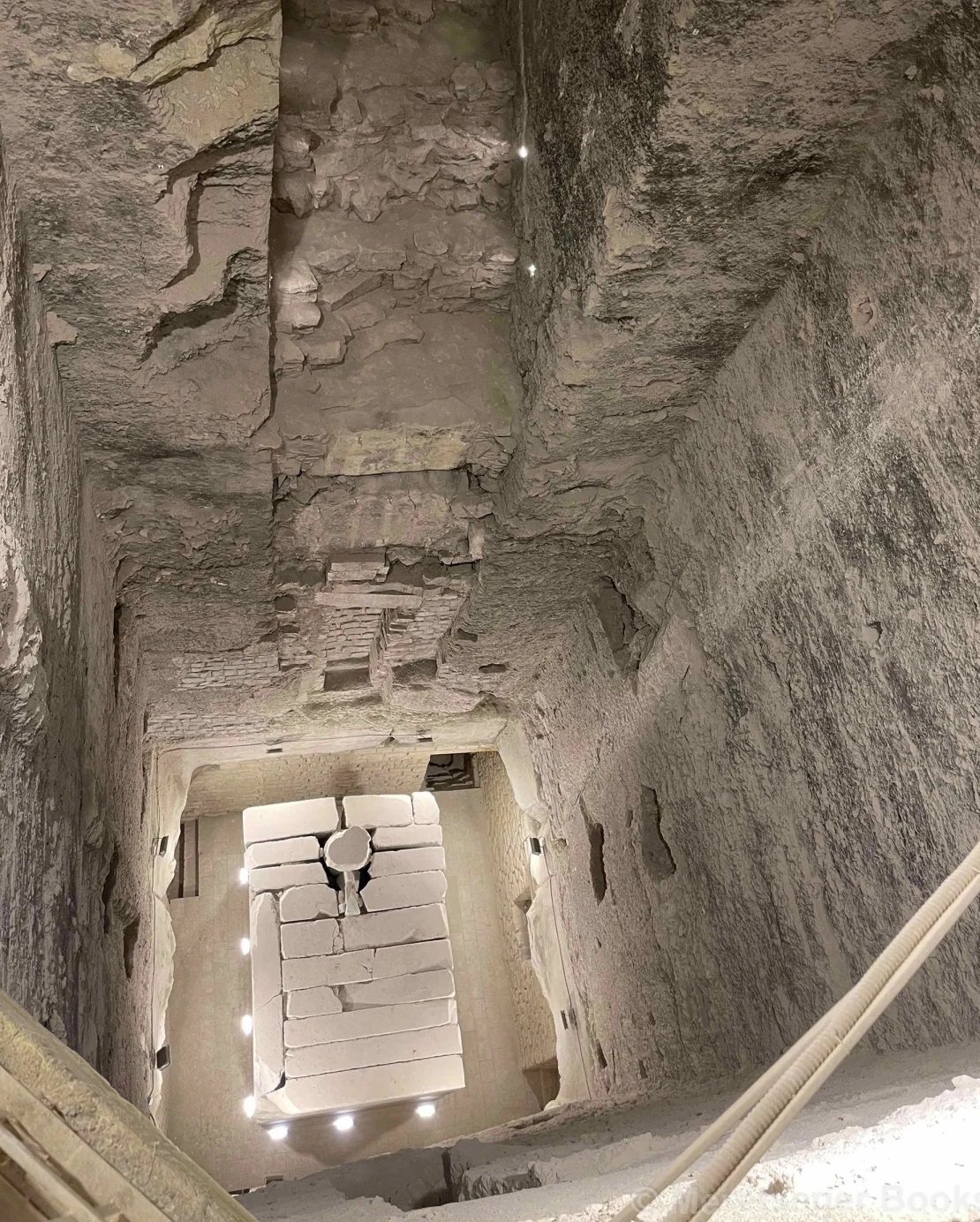EM – A controversial new study claims that ancient Egyptians may have used a hydraulic lift system to construct the Pyramid of Djoser, the world’s first pyramid.
Known as the Pyramid of Djoser, the six-tiered, four-sided step pyramid was built around 4,700 years ago on the Saqqara plateau, an archaeological site in northern Egypt, which was the subject of research conducted by French scientists. The authors claim that following a transdisciplinary analysis they discovered that a hydraulic lift may have been used to build the 204-ft-tall landmark with a number of stones weighing in at 300 kilograms (about 661 pounds).
An architectural feat, generations of archaeologists have pondered how workers were able to construct the pyramid without the use of modern equipment. Now, a team of engineers and geologists brings a new theory to the table — a hydraulic lift device that would have floated the heavy stones up through the middle of Egypt’s oldest pyramid using stored water.
A research team consisting of engineers and geologists has proposed a new theory – a hydraulic lifting device that could raise heavy stones into the heart of Egypt’s oldest pyramid using the power of water.
The research team claims that the ancient Egyptians utilized water from a nearby branch of the Nile River to design a modern hydraulic system including a dam, a water treatment plant and a hydraulic freight elevator.
For the river-powered system to work, water would have flowed from the Nile to the 1.2-m dam, which filtered out sediment before the water traveled downstream to the “Deep Trench,” a water treatment “facility” containing several basins to collect any remaining particles. Next, a series of underground conduits would deliver water 92 feet beneath the pyramid to a hydraulic elevator. The force of water collecting in the well would have been used to float stones up and down a shaft, delivering them to workers.

An illustration of how the hydraulic elevator may have worked; image courtesy of Landre, et al.
“Many detailed publications have discussed pyramid-building procedures and provided tangible elements, but these usually focus on more recent, better-documented, and smaller pyramids of the Middle and New Kingdoms (1980 to 1075 BC),” said lead author Dr. Xavier Landreau, CEO of Paleotechnic, a privately owned research institute in Paris that studies ancient technologies.
“The techniques involved could include ramps, cranes, winches, toggle lifts, hoists, pivots, or a combination of these methods,” he added. “But what about the Old Kingdom pyramids (2675 to 2130 BC), which are much bigger? While human strength and ramps may be the sole construction force for small structures, other techniques may have been used for large pyramids.”
A complex water treatment system drawing upon local resources would have allowed for a water-powered elevator within the pyramid’s internal vertical shaft. Some type of float would have raised the heavy stones up the middle of the pyramid, according to the study.
Based on an analysis of paleoclimatological and archaeological data, the study team proposed that water from ancient streams flowed from the west of the Saqqâra plateau into a system of deep-water trenches and tunnels that surrounded the Step Pyramid.
Additionally, the water would have entered the Gisr el-Mudir, a massive 650-by-350-meter (2.133ft x 1.148ft) limestone structure — which would have acted as a check dam. This device, which was previously thought to be a fortress, a celebration arena or a cattle enclosure, would control and store water from heavy floods, as well as filter out sediment and dirt so they would not clog the water passageways.

Water from ancient streams flowed into a system of trenches and tunnels that surrounded the Step Pyramid, according to the study team. Paleotechnic
The theorized water treatment system would not only allow for water control during flood events, but also would have “ensured adequate water quality and quantity for both consumption and irrigation purposes and for transportation or construction,” said study coauthor Dr. Guillaume Piton, a researcher with France’s National Research Institute for Agriculture, Food and Environment (INRAE).
Previous studies cited by the authors indicated that the Sahara Desert experienced more consistent rainfall thousands of years ago compared to its current arid state. This wetter climate would have transformed the landscape into a savannah, capable of sustaining a greater variety of plant life. However, there is ongoing discussion regarding the exact timing of these wetter conditions.
“Dr. Judith Bunbury, a geoarchaeologist at the University of Cambridge not involved in the study, suggested that there could have been enough water to power a hydraulic lift. She pointed to previous research that found evidence of rainwater gutters in use during the Old Kingdom.”
The Nile’s involvement in pyramid construction has been explored before. A recent study suggested a dried-up branch of the massive river and theorized that the stream was likely used to transport massive limestone blocks to the construction sites of multiple pyramids. There is also some evidence of ancient Egyptians using hydraulics on a smaller scale.
Mysteries of ancient Egyptian structures
Researchers previously have not determined a clear purpose for the vertical shaft within the pyramid of Djoser. Some later pyramids, such as the Great Pyramid of Giza, have shafts believed to have been used for ventilation, and it’s possible the internal shaft could have also been intended for lighting or to relieve pressure on the chamber beneath.
But as the first of its kind, the Step Pyramid was an experimental structure that is believed to have started out as a mastaba (a flat tomb) and was built up, so it remains unclear exactly what its internal features were intended for.

The Step Pyramid of Djoser, Egypt’s oldest pyramid, could have been built using hydraulic lift technology, according to a new study.
The internal shaft within the Step Pyramid connects to a 200-meter-long (656-foot-long) underground tunnel that leads to an external shaft outside the pyramid. This external shaft may have been part of a hypothesized water transportation system within the Dry Moat, known as the Deep Trench, but further exploration is required, according to the study’s authors.
Located near the pyramid’s center, directly beneath the burial chamber, the internal shaft houses a granite box with a plug at its base. While commonly believed to be King Djoser’s tomb, the authors propose a different theory: the box was designed to control the hydraulic lift, enabling water to fill the shaft when needed.

The internal shaft of the Step Pyramid is located near the center of the structure where a granite box sits with a plug at its base.
“These monoliths weigh tens of tons, making it seemingly impossible for them to be hauled using (human labor) alone. Conversely, a moderate-sized hydraulic lift can raise 50 to 100 tons. Exploring concealed shafts within these pyramids could be a promising avenue for research,” – the research team comments.
Despite the over 4,000-year-old mysteries surrounding the pyramids and other features, there is ample evidence that the ancient Egyptians employed certain technologies, like scaffolding and mud-brick ramps, to aid in the construction of various structures, as stated by University of Cambridge geoarchaeologist Bunbury. However, to her knowledge, there is no documentation or depiction of a water-powered lifting device.
She noted that the possibility of using hydraulic elevators remains open, provided there’s sufficient evidence to support it.



